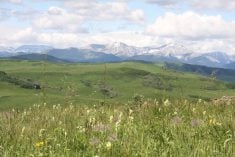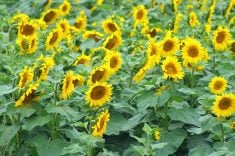BOZEMAN, Montana – Montana residents are mounting a campaign to defeat wheat stem sawfly.
The wheat stem boring insect causes millions of dollars in lost revenue in bad years. The 2005 growing season is shaping up as one of those years, said Montana State University entomologist David Weaver, who heads the Wheat Stem Sawfly Project.
“We can realistically look towards the eventual decline of sawfly using all of the tools available to us, although it may take us years of work to get there,” Weaver said.
Read Also

Gene editing digs deeper space in Canadian plant breeding
More Canadian research into crop variety development is incorporating gene editing, and one researcher notes that Canada’s regulatory approach to gene editing will help drive innovation
“We’ve been doing some initial redistribution with the Montana Wheat and Barley Committee funds. We’d eventually like it to become something producers themselves can redistribute, but that is still several years away.”
The farms taking part in the program will receive parasitoids of wheat stem sawfly larvae in straw residue from a location where the parasitoids have been numerous enough to suppress large numbers of sawflies.
The straw residue was cut at ground level to separate the parasitic wasps in the straw from the sawflies present below the soil surface.
Researchers keep the straw chilled, and then warm it at MSU before taking it to designated fields a few weeks later. The parasitoids complete their development and emerge to attack the sawfly larvae feeding in the wheat stems.
After sawfly larvae are killed by the developing parasitoid, new adult parasitoids emerge from a tiny hole in the side of the stem to attack more sawfly larvae. There are two generations of parasitoids per year, compared with a single sawfly generation.
“Over several years, the parasitoid population increases and suppresses the sawfly population,” Weaver said.
“The sawfly may still be present in later years, but the plan is that they will be kept at such a low level by the predators that they don’t cause significant economic loss to the producer.”
Six sites in Montana previously received parasitoids. “The Brady and Moccasin sites have comparatively little sawfly now,” Weaver said.
“The Conrad, Frazer, and Moore sites still have significant sawfly problems, but the parasitoid populations are increasing. The Big Sandy site has significant sawfly problems also, and the parasitoid population is increasing very slowly there.”
The native parasitic wasps work well in combination with sawfly-resistant solid-stem wheat varieties to suppress sawfly populations.














